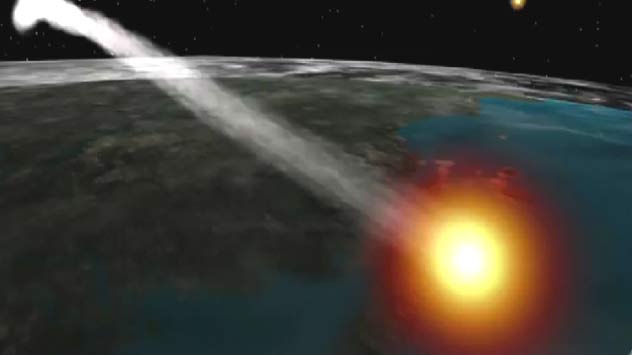Old NASA Satellite's Fall to Earth May Be Visible from Southern California

This story was updated at 10 p.m. ET.
An old NASA satellite fiery death plunge back to Earth tonight (Sept. 23) may be visible to some lucky skywatchers in Southern California, weather permitting, according to the latest prediction from a nonprofit space industry firm.
The 20-year-old spacecraft, called the Upper Atmosphere Research Satellite, could create a spectacular fireball over Southern California that would be visible between 7:40 p.m. and 7:50 p.m. PDT, according to the El Segundo-based Aerospace Corporation.
"The UARS reentry will be a spectacular sight, if you are lucky enough to witness it," said Bill Ailor, director of Aerospace's Center for Orbital and Reentry Debris Studies, in a statement tonight. [Photos of NASA's Huge Falling Satellite UARS]
If the UARS satellite's fiery fall is visible, will pass from the southwest to the northeast of the southern sky, Aerospace officials said. The potential for falling debris "poses little risk to human life and property," they added.
Because the UARS satellite is so large (it weighed 6 1/2 tons at launch), its fiery re-entry would be visible as a bright fireball, even in daylight, to skywatchers with a clear sky. The spacecraft is the largest NASA satellite to fall from space uncontrolled since 1979. [6 Biggest Spacecraft to Fall Uncontrolled From Space]
NASA estimates that about 26 large pieces of the UARS satellite will survive the scorching hot temperatures of re-entry and reach the ground. But the chances of the debris posing an injury risk to people on the ground are extremely remote, NASA officials have said.
Get the Space.com Newsletter
Breaking space news, the latest updates on rocket launches, skywatching events and more!
Earlier today, the Federal Aviation Administration issued a space debris alert to pilots warning them to be on the lookout for any falling UARS satellite pieces. Any sightings were to be reported to FAA officials, the alert stated.
NASA has repeatedly warned the public not to touch any UARS satellite debris if the spacecraft falls over a populated region. All debris sightings should be reported to local law enforcement authorities, NASA officials said.
The $750 million UARS satellite mission was launched into orbit aboard NASA's space shuttle Discovery in 1991. The satellite spent 14 years studying Earth's ozone layer and upper atmosphere, and was shut down in 2005.
Editor's note: If you snap a photo or observe the re-entry of NASA's UARS satellite and want to share it with SPACE.com for a story or gallery, contact managing editor Tariq Malik at: tmalik@space.com.
Follow SPACE.com for the latest in space science and exploration news on Twitter @Spacedotcom and on Facebook.
Join our Space Forums to keep talking space on the latest missions, night sky and more! And if you have a news tip, correction or comment, let us know at: community@space.com.

Space.com is the premier source of space exploration, innovation and astronomy news, chronicling (and celebrating) humanity's ongoing expansion across the final frontier. Originally founded in 1999, Space.com is, and always has been, the passion of writers and editors who are space fans and also trained journalists. Our current news team consists of Editor-in-Chief Tariq Malik; Editor Hanneke Weitering, Senior Space Writer Mike Wall; Senior Writer Meghan Bartels; Senior Writer Chelsea Gohd, Senior Writer Tereza Pultarova and Staff Writer Alexander Cox, focusing on e-commerce. Senior Producer Steve Spaleta oversees our space videos, with Diana Whitcroft as our Social Media Editor.









